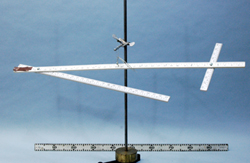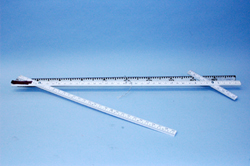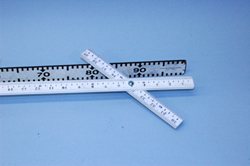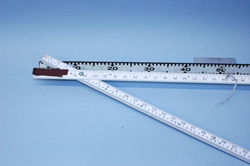Galileo Lever, 1J40.45
Topic and Concept:
Statistics of Rigid Bodies, 1J40. Static Torque
Location:
Cabinet: Mechanic (ME)
Bay: (A6)
Shelf: #1
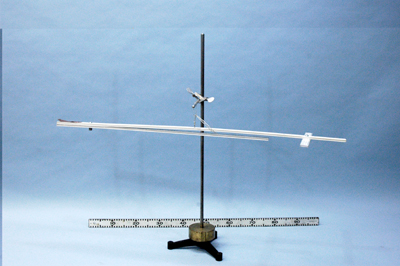
Abstract:
An apparatus shows the conditions for static equilibrium. Two sections of ruler of different lengths are connected to a larger ruler of length equal to the sum of the smaller two. The smaller two are bolted to the large piece so that they may be rotated. The small piece is bolted at its center of gravity. The larger one is not so rotating it results in a net torque.
Equipment |
Location |
ID Number |
|
|
|
Galileo Lever |
ME, Bay A6, Shelf #1 |
|
Important Setup Notes:
- N/A
Setup and Procedure:
- Place weighted stand on table with a 1/4" rod secured in a horizontal position as shown in picture above.
- Hang the apparatus from the rod.
- Try various positions of the bolted rods, and observe the changes in the equilibrium positions of the apparatus.
Cautions, Warnings, or Safety Concerns:
- N/A
Discussion:
This demonstration shows the static torque equation in action. The torques on the main ruler are due to the tension in the string and the weight of the two attached smaller rulers. Since the smaller ruler is attached at its center of mass, the torques on the main ruler due to the weight of the portion on either side cancel out. Thus, there is no torsion along the length of the main ruler. There is only torque due to the overall weight of the small ruler. Since the larger ruler is attached at the end, there is a torsion along the length of the ruler in addition to the perpendicular torque due to the overall weight of the intermediate sized ruler.
|
|
|
|
Videos:
References:
